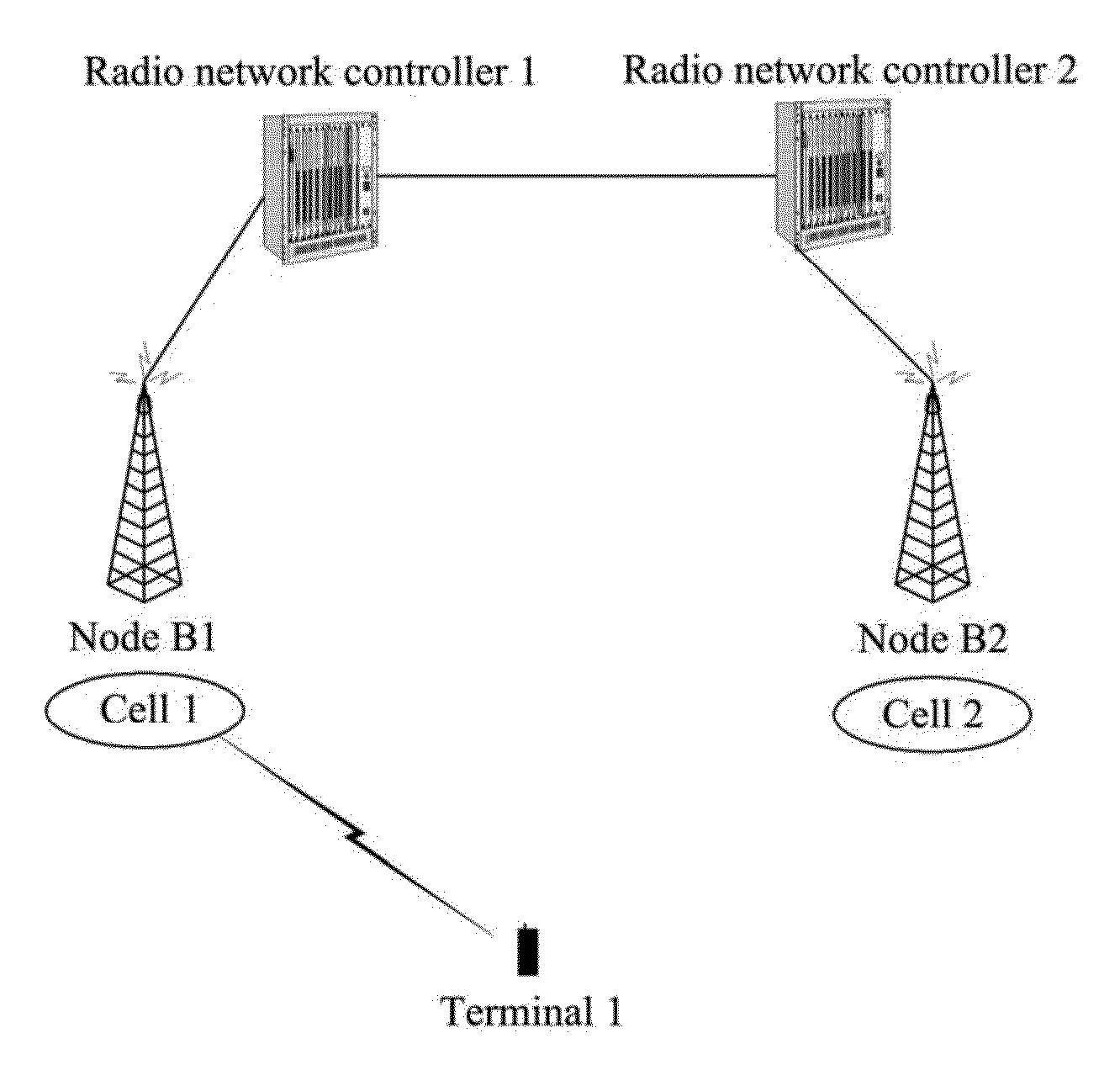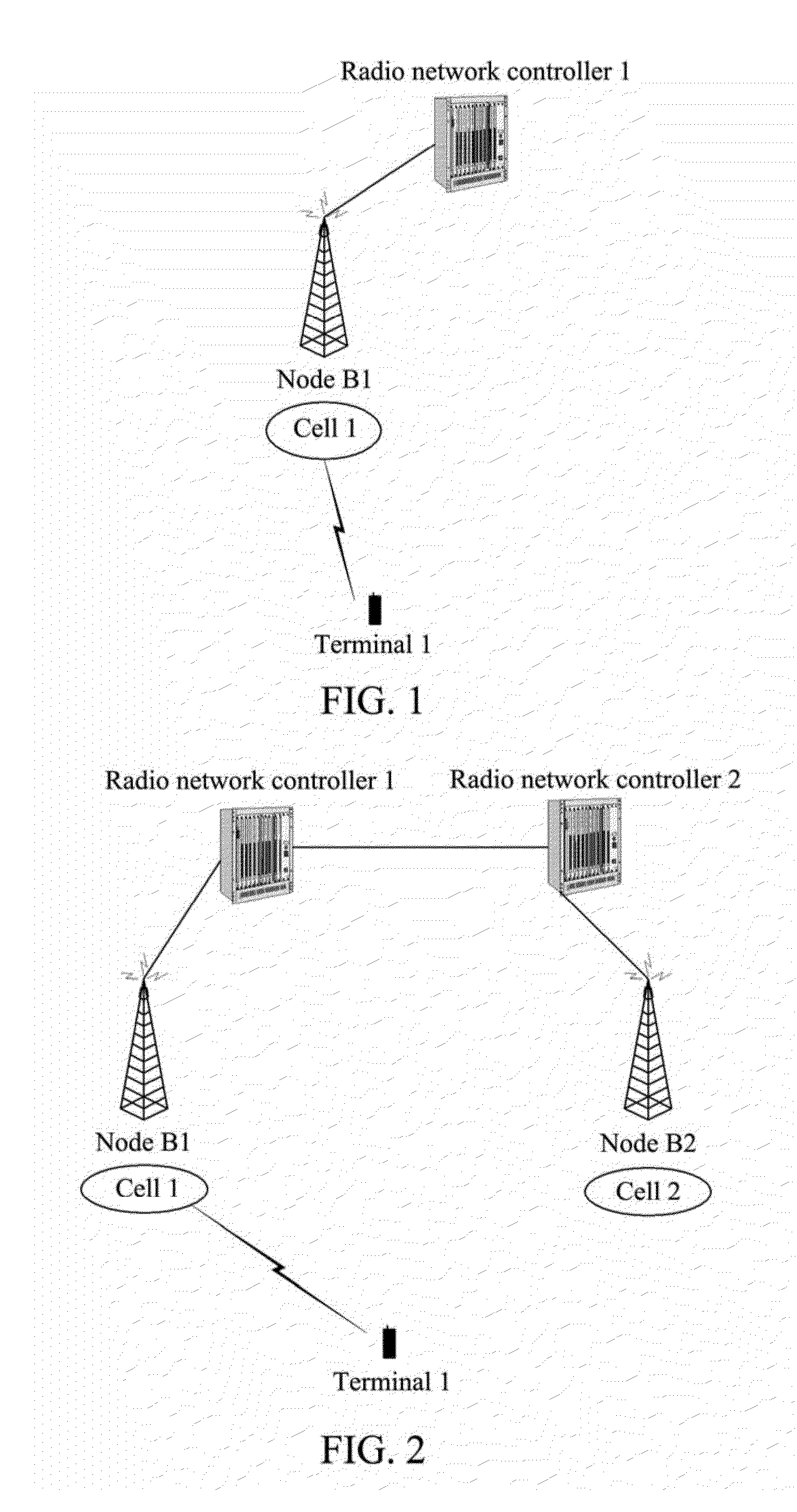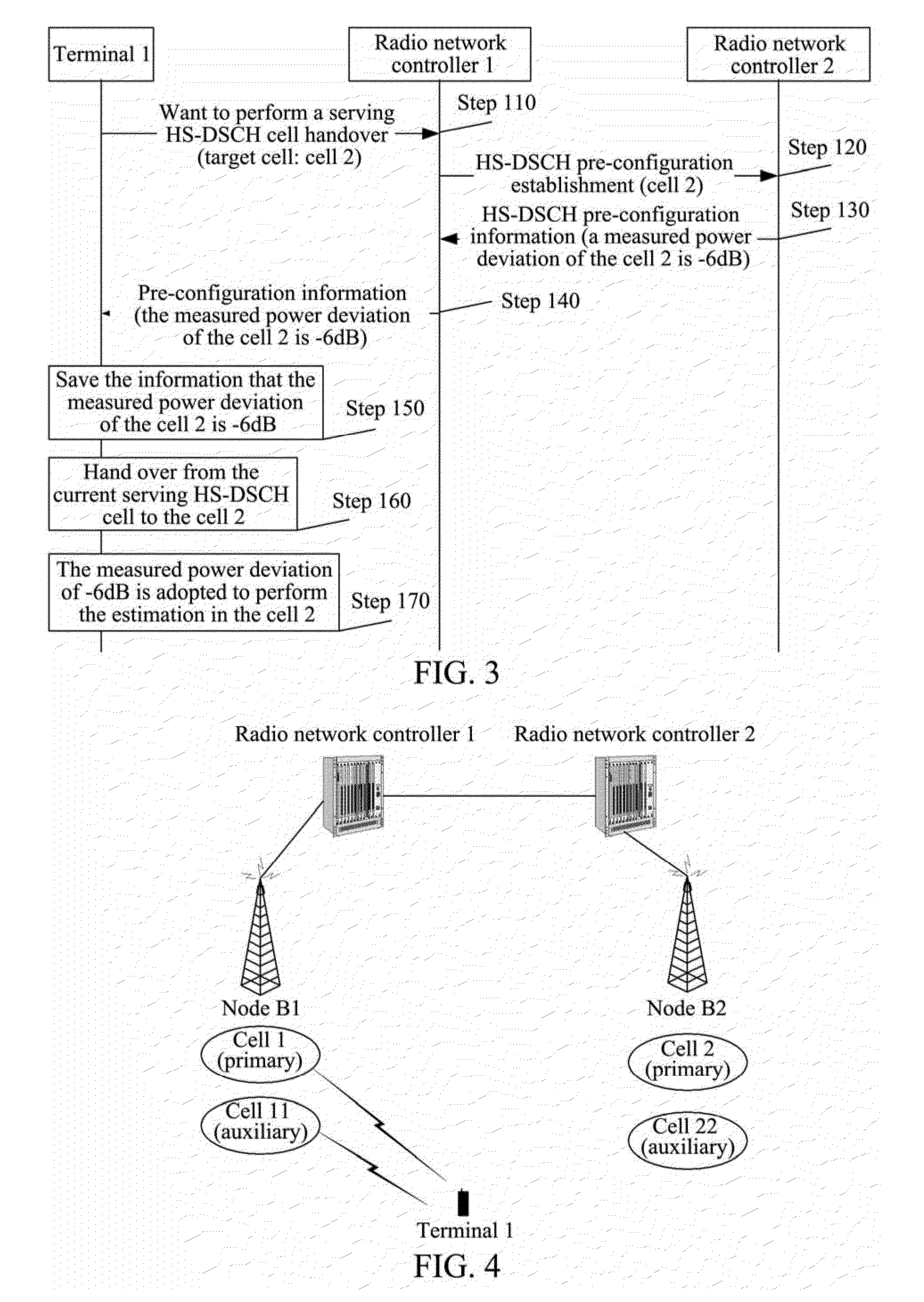Method and System for Calculating Total Received Power of High Speed Physical Downlink Shared Channel
a technology of shared channel and total received power, applied in the field of wireless communication system, can solve problems such as call drop in the terminal
- Summary
- Abstract
- Description
- Claims
- Application Information
AI Technical Summary
Benefits of technology
Problems solved by technology
Method used
Image
Examples
example 1
[0048]A single-carrier setting scenario of the present example is a scenario shown in FIG. 2 (that is the scenario mentioned in the background of the related art): a controlling radio network controller of a cell 1 is a radio network controller 1, and a controlling radio network controller of a cell 2 is a radio network controller 2. An IUR interface exists between the radio network controller 1 and the radio network controller 2. A terminal 1 uses the high speed downlink packet access technology to transmit and receive the service data in the cell 1. The terminal 1 moves from the cell 1 to the cell 2, the radio network controller 1 is a serving radio network controller of the terminal 1, and the radio network controller 2 is a drift radio network controller of the terminal 1. The terminal 1 moves from the cell 1 to the cell 2, the cell 1 and the cell 2 are co-channel cells, the cell 1 is a current serving HS-DSCH cell of the terminal 1, and the cell 2 is a target serving HS-DSCH ce...
example 2
[0059]A multi-carrier setting scenario of the example is as shown in FIG. 4. Since one cell has one and only one carrier, when using the multi-carrier high speed packet access technology, at least two cells must be required, wherein a carrier of one cell serves as a primary carrier, and a carrier of the other cell serves as an auxiliary carrier. Such two cells are called as Dual-cell. The multi-carrier setting scenario is a scenario as shown in FIG. 4, wherein a controlling radio network controller for a cell 1 and a cell 11 is a radio network controller 1, and a controlling radio network controller for a cell 2 and a cell 22 is a radio network controller 2. An IUR interface exists between the radio network controller 1 and the radio network controller 2. The cell 1 and the cell 2 are co-channel cells, and the cell 11 and the cell 22 are co-channel cells. The cell 1 and the cell 11 constitute a dual-cell. The cell 2 and the cell 22 constitute a dual-cell. The terminal 1 uses the hig...
example 3
[0072]A system for implementing the above method described in the patent document includes a serving radio network controller and a drift radio network controller, wherein the serving radio network controller includes a first module and a second module, wherein:
[0073]the first module of the serving radio network controller is configured to: when a terminal performs a serving HS-DSCH cell handover across an IUR interface, request the drift radio network controller to establish an HS-DSCH pre-configuration in a target serving HS-DSCH cell dominated by the drift radio network controller;
[0074]the drift radio network controller is configured to return information of a measured power deviation of the target serving HS-DSCH cell which serves as HS-DSCH pre-configuration information to the serving radio network controller; and
[0075]the second module of the serving radio network controller is configured to take the information of the measured power deviation of the target serving HS-DSCH ce...
PUM
 Login to View More
Login to View More Abstract
Description
Claims
Application Information
 Login to View More
Login to View More - R&D
- Intellectual Property
- Life Sciences
- Materials
- Tech Scout
- Unparalleled Data Quality
- Higher Quality Content
- 60% Fewer Hallucinations
Browse by: Latest US Patents, China's latest patents, Technical Efficacy Thesaurus, Application Domain, Technology Topic, Popular Technical Reports.
© 2025 PatSnap. All rights reserved.Legal|Privacy policy|Modern Slavery Act Transparency Statement|Sitemap|About US| Contact US: help@patsnap.com



